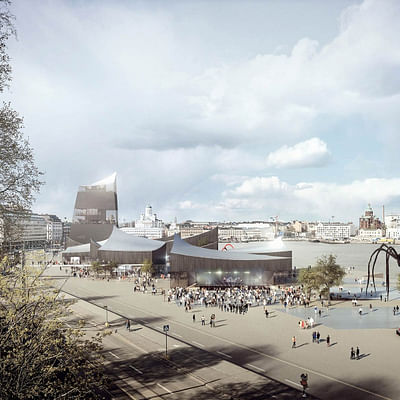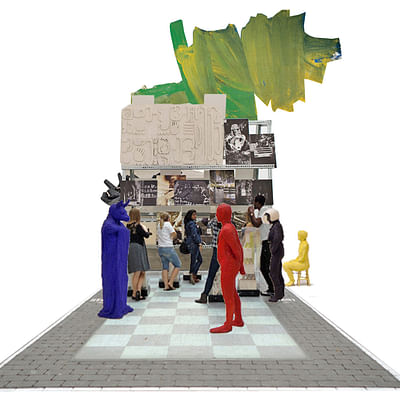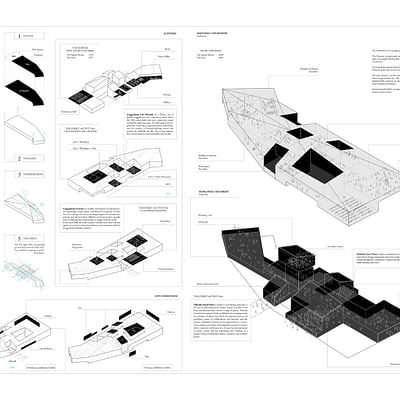The six Guggenheim Helsinki finalists are announced
By Bustler Editors|
Tuesday, Dec 2, 2014

Related
December 2 marks the day that the six finalists of the Guggenheim Helsinki competition are revealed. The controversial competition has sparked enough debate in the architecture + design community that a counter-competition called The Next Helsinki is currently having their own call for alternative solutions.
Stage One reeled in an entertaining mix of 1,715 entries from 77 countries, with most of the entries from the United States, Italy, the United Kingdom, France, Japan, and of course, Finland.
The 11-member jury, who convened from October 30-November 3 to review the bulk of submissions, were tasked with selecting the proposals that show the most potentital for developing into outstanding designs during Stage Two, which ends in spring 2015.
The finalists' identities will remain hidden until the competition ends. Have a look at them right below.

Finalist: GH-04380895
Jury findings: "The Jury felt this was a unique proposal, with a grouping of pavilions creating a continuation of the city. The scheme blended well into the city fabric, reflecting the market close by. The use of natural daylight deep into the plan was praised. However, the Jury was skeptical about the design of the roof scape. The tower-lighthouse created debate amongst the Jury, with concerns over the placement and size of the galleries, nevertheless the Jury felt the overall concept has great potential to redefine the museum as a more urban experience."

Finalist: GH-76091181
Jury findings: "The Jury praised the basic concept behind the proposal. The use of timber seemed especially elegant and the internal courtyard could be memorable with circuits of independent galleries. The use of nine lifts was especially questioned by the Jury but it was felt that the gallery ‘rooms’ could work well if the horizontal and vertical circulation scheme could be developed both in terms of efficiency and complexity of visitor experience. "

Finalist: GH-121371443
Jury findings: "The Jury praised the integration of image and technology, and called the design simple but extraordinary. Jurors thought the scheme had such a density of visual impact that it would draw a nickname from the public but also needs to develop an equally compelling internal logic as the internal program is still too diagrammatic. The proposal used the aesthetic of the building as a sustainable energy device. There were some potential concerns raised over construction risks."

Finalist: GH-1128435973
Jury findings: "The Jury praised the industrial vernacular of the design, with its internal flexibility and external effect. This was felt to be a very compelling response to the Guggenheim principles for the new museum even if it was not fully developed yet. There was a very strong organizing concept with public/incubator on the ground floor and exhibition above. The low form yet pronounced silhouette was considered particularly interesting."

Finalist: GH-5059206475
Jury findings: "This proposal responded well to the cityscape and the site, using the materials from the existing buildings and creating close relationships with its surroundings. The architecture is based on an evolving ecology of materials, forms and atmospheres. The scheme was based on an old store house, which was felt to be a subtle concept with a great deal of potential both for the museum and for the urban and social fabric."

Finalist: GH-5631681770
Jury findings: "This scheme demonstrated a good understanding of how the city works and the proposal presented valuable research demonstrating a new direction for the museum internally and in relation to the urban fabric. There is particular attention to public space and the potential exhibition spaces were considered authentic. The Jury acknowledged the scheme was at an early, conceptual phase, but its non-stereotypical approach was seen to open up a particularly promising future for the project on the site."
Find more images of the six finalist projects in the gallery below.













Share
0 Comments
Comment as :